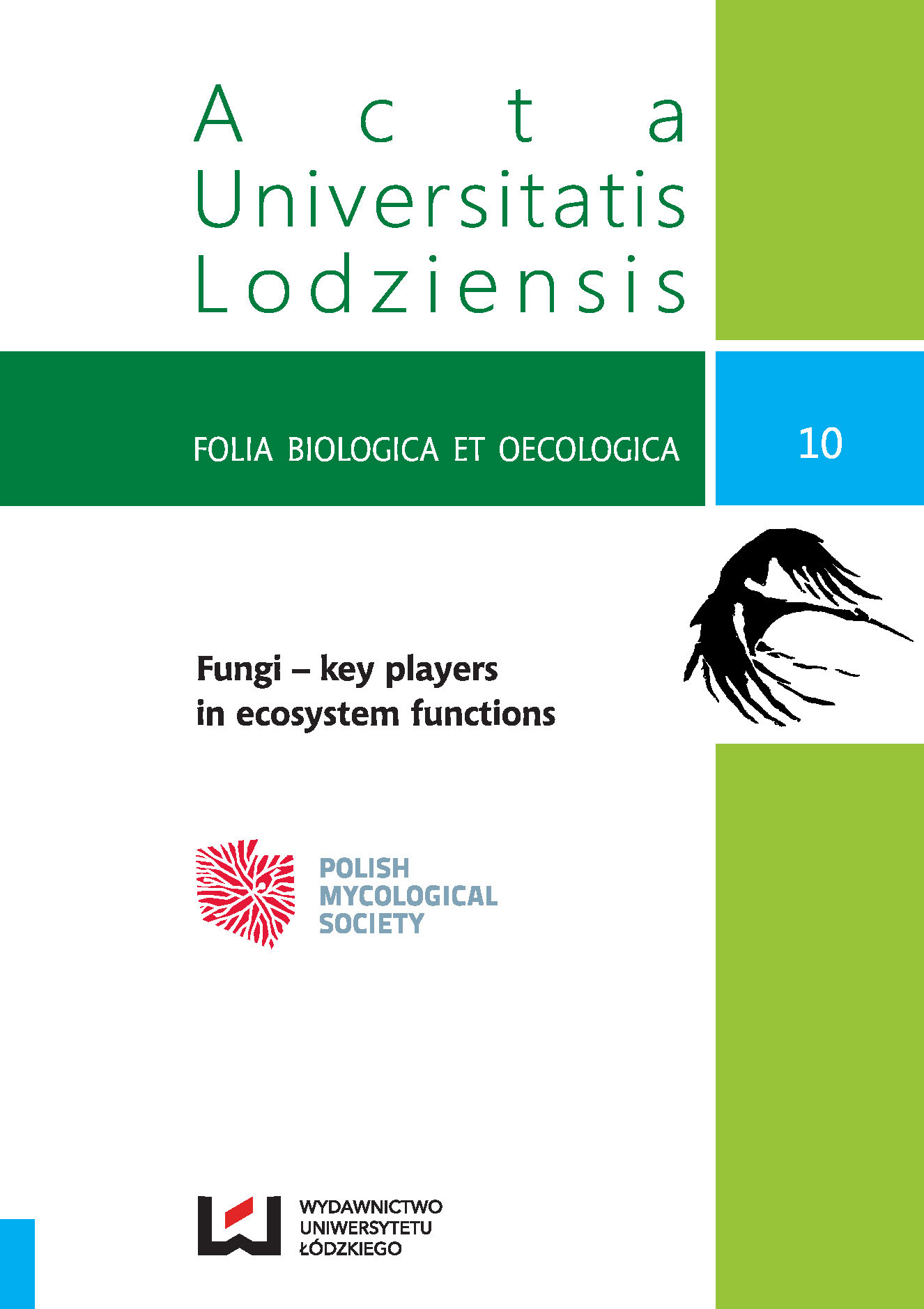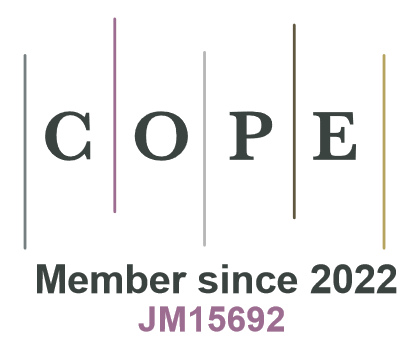Biologically active compounds from selected aphyllophorales mycelial cultures
DOI:
https://doi.org/10.2478/fobio-2014-0004Keywords:
Basidiomycota, indole compounds, phenolic acids, sterolsAbstract
For a long time fungi belonging to Basidiomycota phylum have been in the center of attention because of the presence in their fruiting bodies of compounds with known therapeutic activity. Mycelial cultures of two aphyllophorales species occurring in Poland, Hydnum repandum L., and Sparassis crispa (Wulf.) Fr., were analyzed in our study. The main aim of the study was qualitative and quantitative analysis of extracts obtained from the mycelial cultures for the presence of known biologically active compounds, including phenolic acids, non-hallucinogenic indole compounds and sterols. For analyses a reversed-phase chromatography (RP-HPLC) method was used. The presence of eight phenolic acids including gallic, gentisic, p-hydroxybenzoic, caffeic, p-coumaric protocatechuic, syringic, vanillic and cinnamic acids was confirmed in the extracts obtained from the biomass. The quantitatively predominant metabolites in biomass from in vitro cultures of H. repandum and S. crispa were protocatechuic acid (6.23 μg/g DW) and p-hydroxybenzoic acid (4.52 μg/g DW). Derivatives of indole such as indole, serotonin, tryptamine and tryptophan were measured quantitatively. Their total content was estimated as 1.28 μg/g DW and 3.07 μg/g DW in H. repandum and S. crispa extracts, respectively. The major metabolite found was tryptophan. In addition, ergosterol, one of the sterols present in the biomass of in vitro cultures of S. crispa was analyzed (700.87 μg/g DW). The obtained results confirm the hypothesis that mycelial cultures of domestic species of aphyllophorales are able to accumulate biologically active metabolites.
Downloads
References
Ellnain-Wojtaszek, M. & Zgórka, G. 1999. High-performance liquid chromatography and thin-leyer chromatography of phenolic acids from Gingko biloba L. leaves collected within vegetative period. Journal of Liquid Chromatography & Related Technologies, 22: 1459–1471.
Google Scholar
Ferreira, I.C., Barros, L. & Abreu, R.M. 2009. Antioxidants in wild mushrooms. Current Medicinal Chemistry, 16: 1543–1560.
Google Scholar
Gumińska, B. & Wojewoda, W. 1988. Grzyby i ich oznaczanie [Fungi and their identification] (in Polish). PWRiL, Warszawa.
Google Scholar
Kopczyński, K. 2012. Immunomodulating and anticancer properties of fungi. Acta Mycologica, 47(1): 91–96.
Google Scholar
Mattila, P., Lampib, A.M., Ronkainenb, R. et al. 2002. Sterol and vitamin D2 contents in some wild and cultivated mushrooms. Food Chemistry, 76: 293–298.
Google Scholar
Mraz, M., Woźniewski M., Kacprzak G. et al. 2010. Postępowanie wspomagające. (In:) J. Kołodziej, M. Marciniak (eds). Rak płuca. Termedia Wydawnictwa Medyczne, Poznań: 207–231.
Google Scholar
Muszyńska, B., Sułkowska-Ziaja, K. & Ekiert, H. 2009. Indole compounds in fruiting bodies of some selected Macromycetes species and in their mycelia cultured in vitro. Pharmazie, 64: 479–480.
Google Scholar
Muszyńska, B., Sułkowska-Ziaja, K. & Ekiert, H. 2011a. Indole compounds in fruiting bodies of some edible Basidiomycota species. Food Chemistry, 125: 1306–1308.
Google Scholar
Muszyńska, B., Sułkowska-Ziaja, K. & Ekiert, H. 2011b. Indole Compounds in some culinary-medicinal higher Basidiomyetes from Poland. International Journal of Medicinal Mushrooms, 13(5): 449–454.
Google Scholar
Oddoux. 1957. Recherches sur les myc liums secondaires des Homobasidi s en culture pure: morphologie, cytologie, exigences alimentaires. r voux: J. Patissier, Lyon.
Google Scholar
Sułkowska-Ziaja, K., Muszynska, B. & Szewczyk A. 2014. Antioxidant components of selected indigenous edible mushrooms of the obsolete order Aphyllophorales. Revista Iberoamericana de Micologia. http://dx.doi.org/10.1016/j.riam.2013.10.011
Google Scholar
Sułkowska-Ziaja, K., Muszyńska, B. & Końska, G. 2005. Biologically active compounds of fungal origin displaying antitumor activity. Acta Poloniae Pharmaceutica, 62: 153–159.
Google Scholar
Yuan, J.P., Kuang, H.C., Wang, J.H. et al. 2008. Evaluation of ergosterol and its esters in the pileus, gill, and stipe tissues of agaric fungi and their relative changes in the comminuted fungal tissues. Applied Microbiology and Biotechnology, 80: 459–465.
Google Scholar
Yuan, J.P., Wang, J.H., Liu, X. et al. 2006. Determination of ergosterol in ganoderma spore lipid from the germinating spores of Ganoderma lucidum by high-performance liquid chromatography. Journal of Agricultural and Food Chemistry, 54: 6172–6176.
Google Scholar
Zjawiony, J.K. 2004. Biologically active compounds from Aphyllophorales (polypore) fungi. Journal of Natural Products, 67: 300–310.
Google Scholar
Downloads
Published
How to Cite
Issue
Section
License

This work is licensed under a Creative Commons Attribution-NonCommercial-NoDerivatives 4.0 International License.









